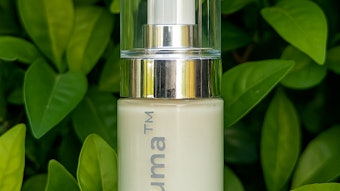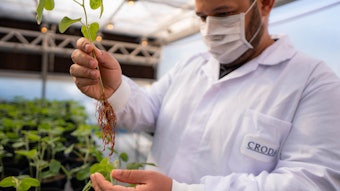
The study, published in the Journal of Drugs in Dermatology, was conducted to determine the efficacy of a botanical combination incorporated in the Kamedis brand eczema therapy cream for children with mild to moderate atopic dermatitis (AD).
AD is usually associated with other atopic diseases (asthma, allergic rhinitis) and can vary with age. The childhood phase typically occurs from 2 years of age to puberty. AD usually appears in early infancy and is characterized by pruritus and erythematous papules. In severe cases, intense pruritus and scratching may lead to a secondary infection. Although AD is a chronic disease, it can resolve in about 60% of patients before adulthood. In 45% of children, the onset of AD occurs during the first 6 months of life; during the first year of life, in 60%; and in at least 85% before the age of 5. In those children with onset before the age of 2 years, 20% of the population will have persisting manifestations of AD, and 17%, on the other hand, will experience intermittent symptoms by the age of 7.
Related: [podcast] Are Naturals Better for Compromised Skin? Burt's Bees Responds
Older children are less likely to have the exudative lesions commonly seen in infancy and instead, exhibit more lichenified papules and plaques representing the severity of the chronic disease and involving the hands, feet, wrists, ankles and antecubital and popliteal regions.
Study
The children subjects were a sub-population of a 108 combined population of adults and children evenly and randomly divided into three treatment groups: test product, vehicle and comparator. The vehicle used was an identical test product without the botanical combination, while the comparator was a leading over-the-counter (OTC) brand in the U.S. market. All three groups used the same Kamedis body wash, followed by one of three randomized treatment creams for the affected areas.
Related: Infant Skin: Caring for Compromised Conditions
Thirty-nine child subjects with uncomplicated, stable, mild to moderate atopic dermatitis were recruited and qualified for the study—24 females and 15 males, with ages varying between 3 and 18. Investigators assessed the severity of each subject’s AD using the Investigator Global Assessment (IGA) for the affected Body Surface Area (BSA) extent, which was evaluated once each week for four weeks. Subjective symptoms of pruritus and insomnia were evaluated by the patient or their legal guardian. The SCORAD and EASI indexes were calculated based on the collected parameters.
Previously: Formulating for Children's Sensitive Skin
Results
The test product demonstrated an improvement in all evaluated and calculated clinical parameters over the vehicle at the end of the treatment duration, proving the test product was more effective and beneficial than the vehicle. The test product obtained 40% of “clear” IGA subjects out of the enrolled subjects, and 60% out of the “clear” and “almost clear” IGA subjects, compared to 8% and 38%, respectively, with the vehicle, presenting a clear advantage over the vehicle. The BSA improvement comparison analysis of the test product over the vehicle yielded a p value of less than 0.05, which is statistically significant. The SCORAD and EASI indexes also showed an advantage of the test product versus the vehicle at week 4.
Also related: Infant Skin Microbiology and Its Relation to Skin Health
Conclusion
The study results validate that the botanical combination was the key factor for the efficacy and improvement of AD symptoms within this population of children.










